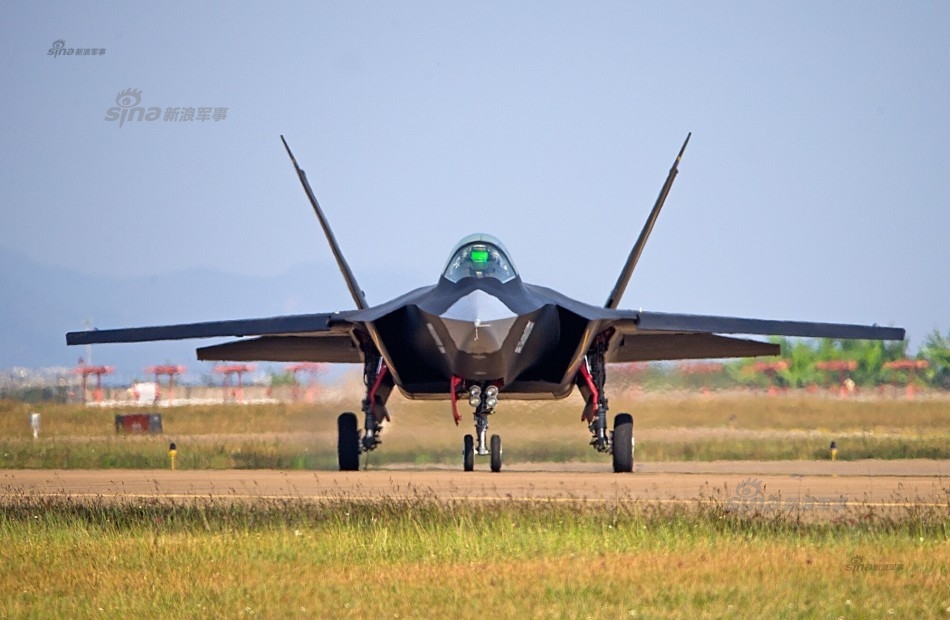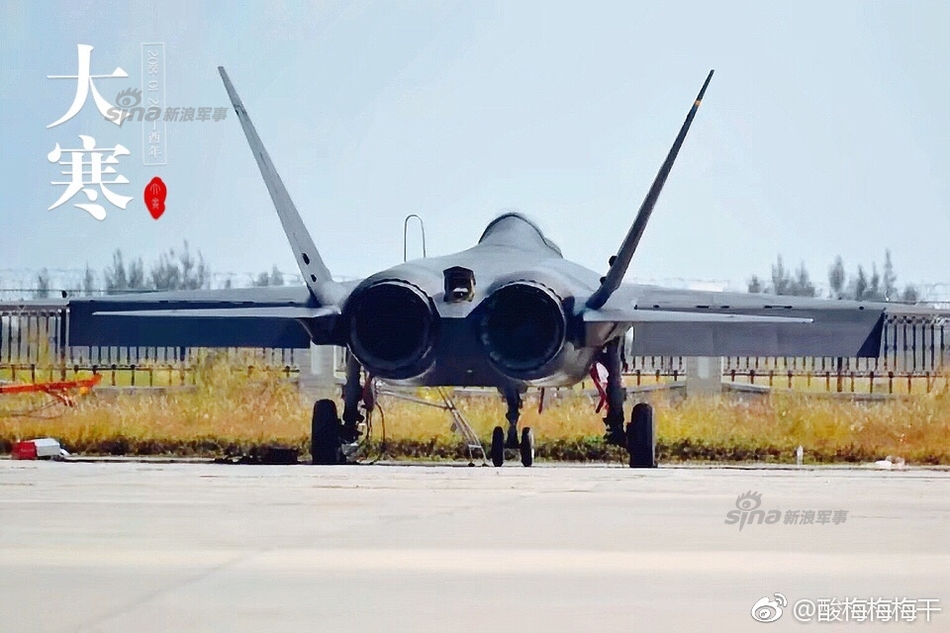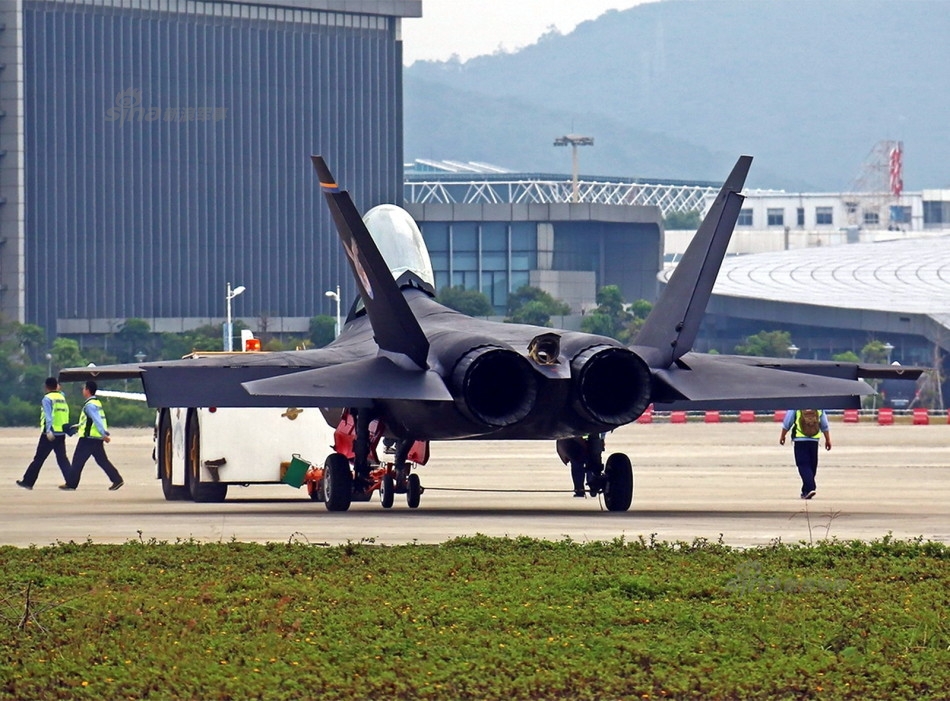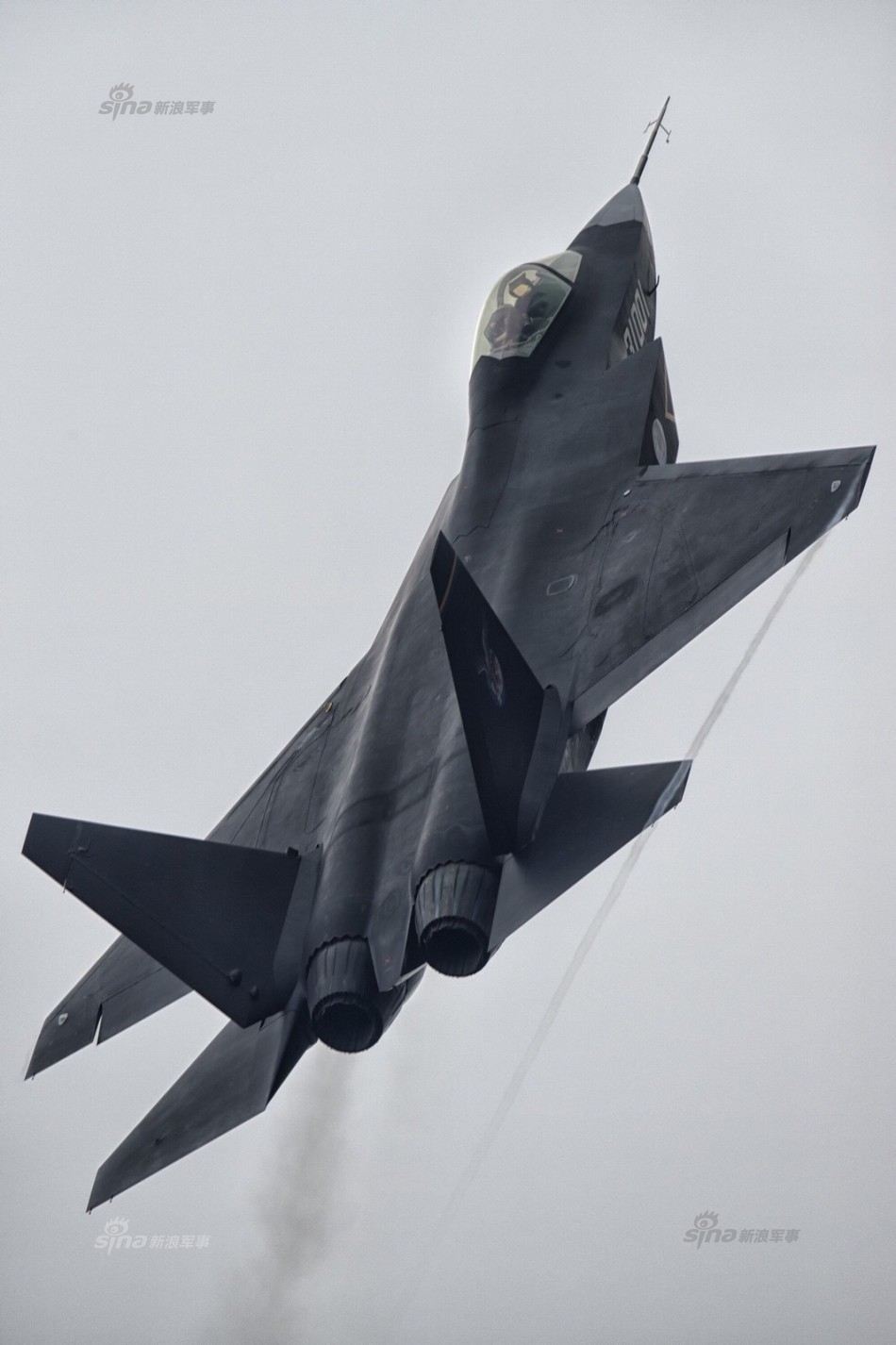You are using an out of date browser. It may not display this or other websites correctly.
You should upgrade or use an alternative browser.
You should upgrade or use an alternative browser.
Shenyang FC-31 / J-31 Fighter Demonstrator
- Thread starter RedSky
- Start date
- Status
- Not open for further replies.
TerraN_EmpirE
Tyrant King
Not Quite.LOL. In a sense I wonder if the American pilots are talking within themselves if that is what F-35 should have been, without the requirement of sharing the same frame with STOVL versions. Not saying the FC-31 is more advanced, just the general layout seems to be more reasonable(?) at least to my untrained eyes.
First Although the STOVL demands did place requirements on the frame most of those are only really found in the F35B not so much the A or C.
The choice of a single engine was as much the USAF. They deemed a Single Engine fighter more budget wise, and have the F16 to prove it.
track back a bit The US and Russia both decided to go with a high low mix of Fighters for the 4th generation. In the US that resulted in first the twin engine F15 then the Single engine F16 in Russia that resulted in SU27 and Mig 29. F16 and Mig29 were supposed to be the lower end machines that would be sold to the Client states and Allies to build up there Airforces, Now number built ( and Sold though) F16 far exceeds Mig29 over 2 to1 Almost 3 to 1. Both are good fighters but it is easier to build maintain and sell for export a single engine fighter then a twin engine fighter.
Although at first glance the twin should mean better thrust you have to consider the weight and fuel burn of the second engine. because the Engines have to lift themselves. As such a single really powerful engine in a fighter can match the performance of a twin moderately powered fighter and thus far all western estimates lean J31 and F35 to be doing just that performing at a almost 1 to 1.
Not Quite.
First Although the STOVL demands did place requirements on the frame most of those are only really found in the F35B not so much the A or C.
The choice of a single engine was as much the USAF. They deemed a Single Engine fighter more budget wise, and have the F16 to prove it.
The single engine choice was due to LM's STOVL design, not due to STOVL requirement.
Because STOVL design was the most restrictive among the three, and since all F-35 are forced to follow the same layout to share parts, then single engine becomes the only layout for all three versions.
In FC-31's case it did not have an STOVL version so its design is optimized for AF and/or Navy
Last edited:
The single engine choice was due to LM's STOVL design, not due to STOVL requirement.
Because STOVL design was the most restrictive among the three, and since all F-35 are forced to follow the same layout to share parts, then single engine becomes the only layout for all three versions.
In FC-31's case it did not have an STOVL version so its design is optimized for AF and/or Navy
While "STOVL" is much easier with a single engine, the USMC wanted a STOVL design to fit their doctrine, and their desire for the aircraft to fit their need. The USAF was also desirous of a single engine aircraft to operate in tandem with the F-22, and fill the role of the F-16 in the new Century,,, there is NO reason to dispute these facts.. Now if the Navy had wanted a twin engine aircraft, and that had been a primary requirement, the F-35 would not have been built as it is, in fact the Navy is quite happy with the F-35C, asking only that specific Naval equipment be added, for ex heavier gear, and a tale hook, and greater fuel capacity.
In order to accommodate the Marines, LockMart was able to adapt the basic design to a STOVL configuration, in order to accommodate the USN, Lockmart increased the area of the wing and horizontal stabilizers, added the hook, more fuel and folded the wings,,, now whats the problem?? it NOT the exact same airplane, the fact that the J-31 is so very similar in appearance falls back to the fact that aircraft performing a similar mission, and designed to similar mission requirements, tend to be very similar in design and appearance??
so each version is tailored to the desires of the recipient service in a very dramatic way
while I do prefer a twin engine Naval Carrier Fighter, the USN is looking for an airplane that will fulfill all their requirements, and yet be cheaper to acquire and maintain than for instance the F-14, or even the F-18 Super Hornet for that matter...
So the J-31, FC-31 are very similar in appearance to Western Aircraft and former Soviet Bloc aircraft??? I'm willing to leave it at that?? the J-31 in the V-1 version flew extremely well, and in case you hadn't noticed, appears to be fairly readily adaptable to either an Air Force or Navy role, simple as that.
The V-2 FC-31 is even more refined, no doubt reducing the radar signature and is a sign of steady progress and continuing developemental progress.
Further More! the Chinese are NOT interested in re-inventing the wheel, they have been very happy with the resurrected Varyag/Lioaning, CV-17 is almost a mirror image. J-11, J-15, and J-16, are the latest proof that they are quite happy to adapt an existing design to their needs,,,, and those Chinese Flankers are at the head of the class, same with the J-10..
The FC-31 is a "clean sheet airplane", but as most of us would do, it is similar in appearance to aircraft fulfilling a similar role,,, that's not rocket science, that's using your head and sticking with "known quantities" in order to fulfill a desire for an aircraft to fulfill those needs.
Last edited:
CV-17 is structurally similar to Varyag because they plan on pumping out carriers. They are certainly happy with J-15 performance. It'll only be improved by CATOBAR launching. The real priority here is to get support aircraft on board and get some serious numbers. Since they know Varyag well enough to improve on the design and obviously electronics outfit, there's good reason to build at least one more. Especially considering China will only have J-15 flying off carriers for some time and CV-17 will be no worse than any "better" carrier in this role of launching J-15s. Note that CATOBAR is not ready. So either wait till then for second carrier or pump out another improved Varyag.
Again I doubt we'll see J-31 on Chinese carriers. No indicator of this happening or being tested at all. No rush to make this happen either.
Again I doubt we'll see J-31 on Chinese carriers. No indicator of this happening or being tested at all. No rush to make this happen either.
In the F-35's case, it has all-moving tails, whereas the J-31 has rudders built into the tail. TVC might compensate for the yaw authority lost, of course, but the J-31 is not TVC yet. Another issue is that the J-31 lacks the EODAS apertures the F-35 enjoys; the F-35 will have better situational awareness and IR sensor than the J-31.
SinoSoldier
Colonel
In the F-35's case, it has all-moving tails, whereas the J-31 has rudders built into the tail. TVC might compensate for the yaw authority lost, of course, but the J-31 is not TVC yet. Another issue is that the J-31 lacks the EODAS apertures the F-35 enjoys; the F-35 will have better situational awareness and IR sensor than the J-31.
Pretty sure that a production variant of the FC-31 would have EOTS, EODAS installed. Especially an enlarged variant which would have more room for internal wiring and such.
by78
General
I like this.. looks like China engines?

These are very old photos of the J-31 demonstrator, whose engines are an RD-33 variant. This has been a well-known fact since the demonstrator was first revealed more than five years ago.
- Status
- Not open for further replies.





